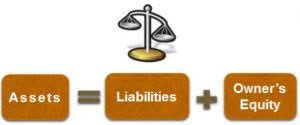
It provides the same high-level overview that a master schedule does. It represents the entire project’s timeline at a high level, including all key phases, milestones and deliverables. It typically includes all major tasks but doesn’t go into deep detail about each task. Our Gantt chart and roadmaps link all four types of task dependencies to avoid delays and cost overruns as well as filtering for the critical path to identify essential tasks. It schedules tasks, phases and projects, allocates resources and monitors progress. The master schedule is a crucial tool for project managers because it helps ensure that tasks are executed in the right sequence and on time.

Project Budgeting Process – What Is It? And How Does It Work?
The master budget should also be reviewed to ensure that all individual budgets are compatible and have no inconsistencies or conflicts. The first step in creating a master budget is establishing individual budgets for each department or area of the business. The business should create these budgets with input from the relevant stakeholders and reflect each area’s specific needs and goals. The operating expenses budget encompasses administrative and sales-related costs, such as advertising or marketing.
Principal Components of a Master Budget Include
Leaving enough time to gather data, analyze past spending, and account for variables will result in the most accurate master budget. The last part of the Annual Business Plan is the Investment or Capital Budget. It shows the total amount that a company plans to generate by selling (or acquiring) fixed assets such as machinery, Oil And Gas Accounting plants, or cars.

#6. Budget for Cash
It serves as a more actionable document used for daily management, providing detailed timelines for the team and ensuring that resources are effectively utilized. It is also used for managing risks, tracking progress and adjusting timelines. A master schedule is a comprehensive high-level timeline that outlines the major phases, tasks and milestones of a project from start to finish.

Step 2: Create a budget for production.
It includes expenses such as advertising, promotions, and public relations. The cash budget is a plan that projects the business’s cash inflows and outflows for the budget period. It helps businesses ensure sufficient cash to meet their financial obligations, such as paying suppliers, salaries, and taxes. The following illustrations include a partial master budget for March including the various parts of the operating budget, a cash budget andan abbreviated balance sheet. Budgets for February and April can also be prepared with the given data.
- In the next section, we consider the purposes, benefits, limitations and assumptions of the master budget.
- Our Gantt chart and roadmaps link all four types of task dependencies to avoid delays and cost overruns as well as filtering for the critical path to identify essential tasks.
- The cash budgetand budgeted balance sheet are discussed below.
- When all departments understand how the company’s goals translate into its budget, motivation to stick to that budget increases.
- A master schedule is part of project scheduling in project management.
- A plant wide rate based on direct labor hours is used as the overhead allocation basis in this chapter and subsequent chaptersmainly to simplify the illustrations.
It provides a master budget schedules strategic framework for aligning production with business goals, feeding detailed requirements into project schedules. The costs of the inputs, or resources required to perform such activities arereferred to as discretionary costs. Discretionary costs are usually generated by serviceor support activities. In terms of cost behavior, discretionarycosts may be fixed, variable or mixed.
#2. Avoid evaluating employees based on budget compliance.
Various costs fall into one of these three categories based onthe cause and effect relationships involved. These three cost concepts Accounting Periods and Methods are summarized inExhibit 9-2 and discussed in more detail below. At any particular level of production, e.g., 1,000 hours, budgeted and standard variable overhead costs are always equal. However,budgeted and standard fixed overhead costs are only equal when the budgeted hours planned for the month are equal to the denominator hours used to calculatethe overhead rates. When working with a budgetthis difference is referred to as the planned production volume variance.

